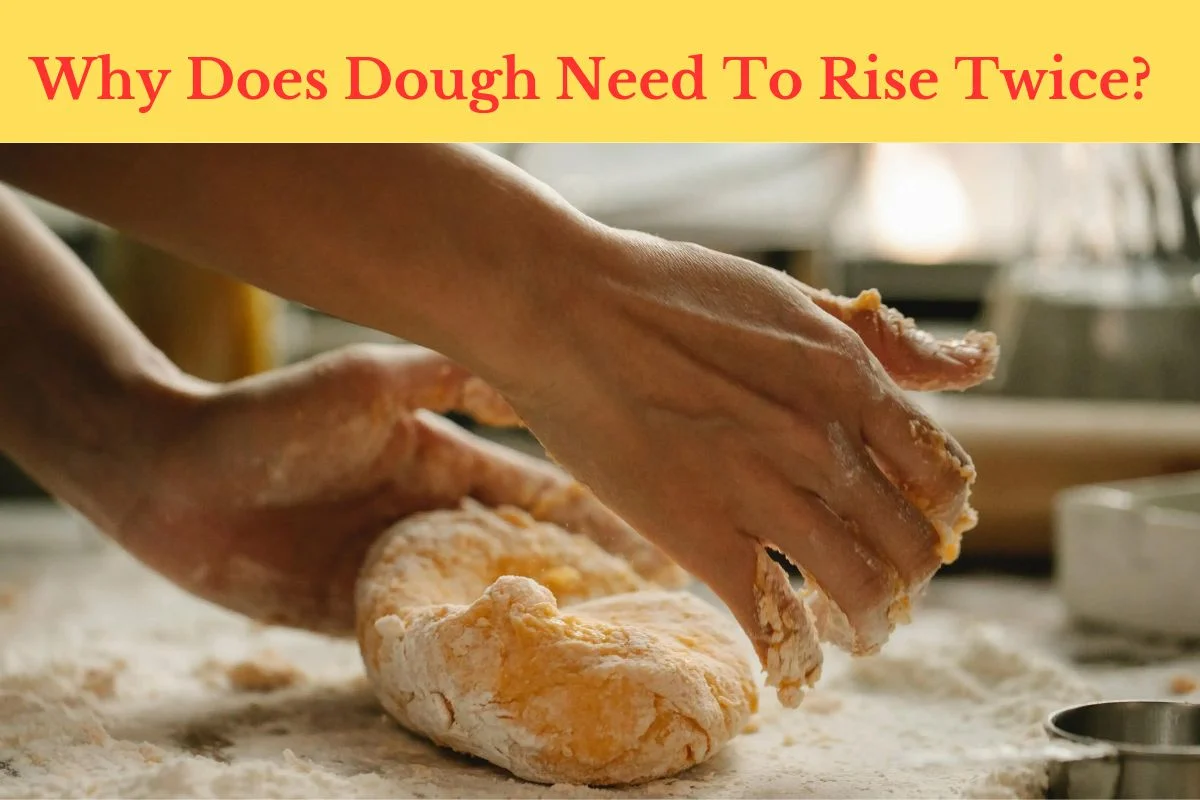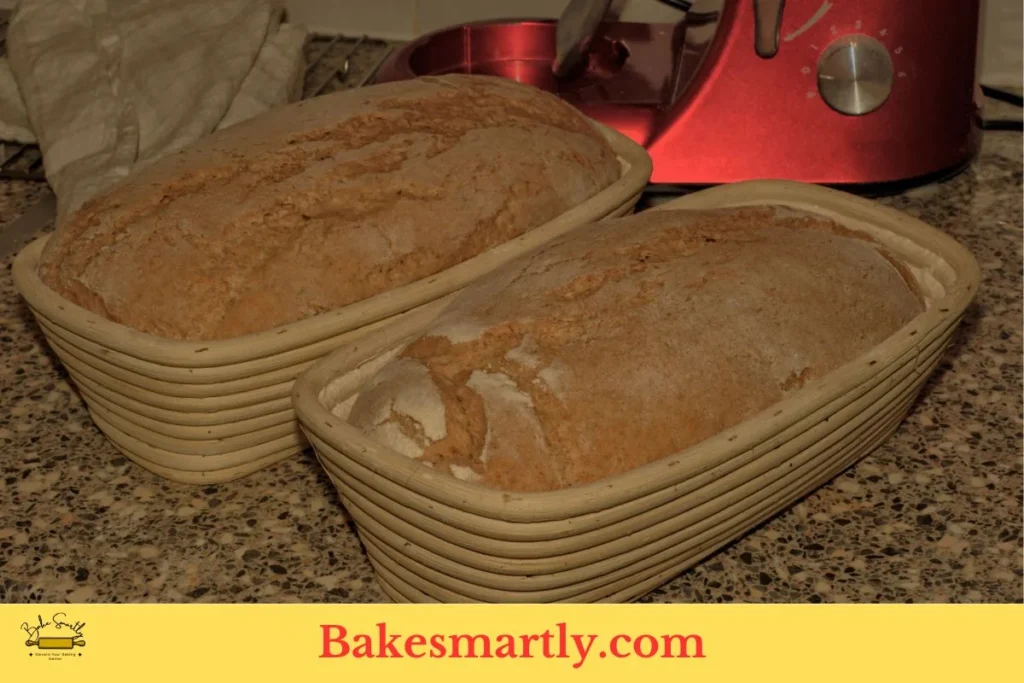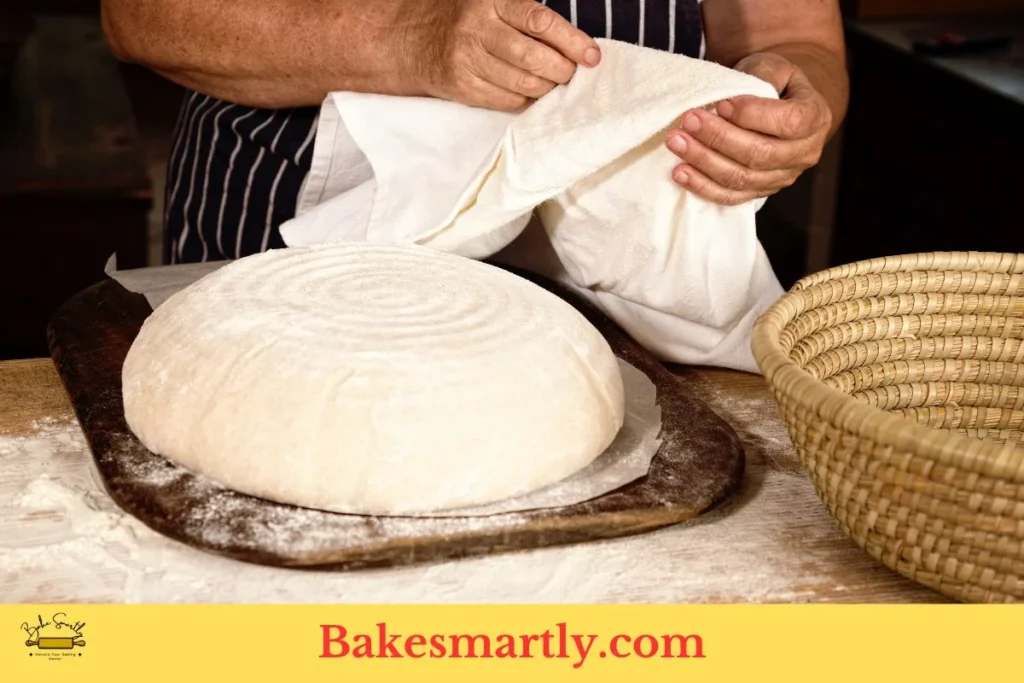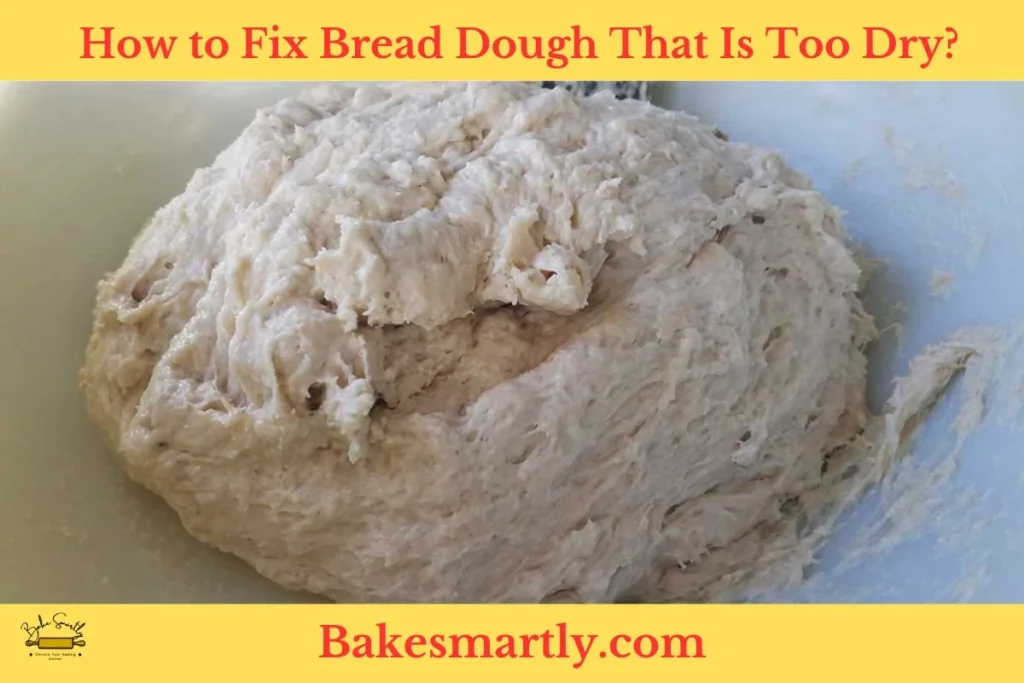
Baking bread is an age-old tradition that fills our homes with the comforting aroma of freshly baked loaves. Yet, the process of creating that perfect, airy, and flavorful bread can be more complex than it seems.
One key step in breadmaking that often baffles novice bakers is why does dough need to rise twice? In this detailed guide, we’ll delve into the science and art of breadmaking, exploring the necessity of this seemingly repetitive process.
Table of Contents
ToggleWhy is a Second Rise the Standard in Baking?
The practice of incorporating a second rise into the bread-making process has become a standard in baking for several compelling reasons. This crucial step in bread production offers a multitude of benefits that ultimately contribute to the perfect loaf.
First and foremost, the second rise allows for further fermentation. During this stage, yeast continues to metabolize sugars, producing additional carbon dioxide gas. This extended fermentation not only enhances the bread’s flavor but also contributes to its unique texture. The result is a loaf that is lighter, airier, and more delicately crumbed, making it a delight to the senses.
Moreover, the second rise plays a pivotal role in gluten development. Gluten, a protein found in wheat, is responsible for the bread’s structure and elasticity. Allowing the dough to rest and rise a second time relaxes the gluten, making it more extensible. This improved gluten structure results in a uniform crumb and a bread that is better able to hold its shape.
Furthermore, the second rise offers practical advantages. It provides an opportunity to reshape the dough if necessary, ensuring that it retains its desired form before baking. It also allows for better control over the rising process, as bakers can monitor the dough’s progress and readiness for the oven.
My Experience With a Single vs Double Rise
As an avid home baker, I’ve embarked on numerous bread-making adventures, experimenting with both single and double rises to understand their impact on the final product. Through these experiences, I’ve gained valuable insights into the significance of each approach.
When I first began my bread-making journey, I often opted for a single rise due to its convenience and time-saving nature. However, I soon realized that the flavor and texture of my bread were lacking compared to those that underwent a double rise. The single-rise loaves were denser, with a less pronounced flavor profile.
Curiosity led me to explore the double rise method, and the results were remarkable. The first rise allowed the dough to develop complex flavors, while the second rise contributed to an airy, light texture. The difference was palpable in every bite.
While a single rise can still yield decent bread, my experience has taught me that the extra effort of a double rise is well worth it for those seeking exceptional homemade bread. It elevates the baking process from a simple task to a culinary journey, producing loaves that are not only delicious but also a source of immense pride.

What Makes A Second Rise So Important?
A second rise in bread-making is a critical step that transforms an ordinary loaf into an extraordinary one.
Here are five key reasons why the second rise is indispensable:
- Enhanced Flavor: The extended fermentation during the second rise allows yeast to work its magic, producing complex flavors that develop over time, resulting in a more flavorful bread.
- Improved Texture: The additional rise leads to a finer and lighter crumb structure, giving the bread a soft, airy, and delightful texture.
- Gluten Development: The second rise relaxes the gluten structure, making it more extensible. This results in a uniform crumb and better structural integrity.
- Shape and Appearance: It offers an opportunity to reshape the dough, ensuring it maintains its desired form and looks appealing when baked.
- Control and Precision: The second rise allows bakers to monitor the dough’s progress closely, ensuring it’s perfectly proofed and ready for the oven, resulting in consistent and reliable results.
Factors that Affect the Success of Double-Raising
The success of the double-rise technique in bread-making depends on various factors. These elements play a critical role in achieving the desired texture and flavor of your bread.
Here are some key factors that can significantly impact the outcome:
- Yeast Type: The type of yeast you use, whether active dry, instant, or sourdough starter, can affect the timing and efficiency of the double rise. Different yeasts have varying fermentation rates and characteristics.
- Room Temperature: The ambient temperature in your kitchen plays a vital role in the rising process. Warmer environments can expedite rising, while cooler conditions may require more time.
- Hydration Level: The hydration level of your dough, which is the ratio of water to flour, can influence the dough’s structure and elasticity. Higher hydration doughs often require more skill and practice to handle during shaping.
- Recipe: Each bread recipe may have specific instructions for the double-rise process. Some breads may require longer or shorter rising times for optimal results.
- Experience: Your experience and familiarity with the bread-making process are significant. Over time, you’ll develop an intuition for when the dough has risen sufficiently.

Common Mistakes to Avoid When Double Raising
Common mistakes to avoid when double rising your dough can make a significant difference in the final outcome of your baked goods. Here are some key pitfalls to watch out for:
- Overproofing: Allowing your dough to rise for too long during the first or second rise can lead to overproofing. This results in a dough that collapses in the oven, producing a dense, deflated loaf. It’s essential to monitor the dough’s progress and follow the recommended rise times in your recipe.
- Underproofing: On the flip side, underproofed dough won’t develop the desired texture and flavor. Rushing the rising process can lead to a product that lacks the characteristic qualities of well-risen bread.
- Inadequate Punch-Down: Failing to properly punch down the dough after the first rise can result in uneven texture and large air bubbles in your bread. It’s crucial to degas the dough and redistribute the yeast and sugars before shaping.
- Inconsistent Shaping: During the second rise, if you don’t shape the dough uniformly, you may end up with an irregular final product. Proper shaping ensures an even crumb structure and a visually appealing loaf.
- Inaccurate Timing: Timing the double rise is crucial. Factors like room temperature and the type of yeast used can affect the duration of each rise. It’s essential to follow your recipe’s guidelines and adapt based on your environment.
By avoiding these common mistakes, you can master the art of double rising your dough and create bread that’s not only visually appealing but also delicious and satisfying.
Tips for Troubleshooting Double Raising Issues
Here are three essential tips for troubleshooting double raising issues:
- Monitor the Proofing Time: The key to a successful double rise is timing. If your dough isn’t rising as expected, consider adjusting the proofing time. It’s crucial to allow the dough to rise until it has doubled in size during both the first and second rises. Keep in mind that factors like room temperature and the type of yeast you’re using can affect the proofing time, so be flexible and patient.
- Avoid Overhandling: Overworking the dough during shaping and punching down can lead to issues. Be gentle when handling the dough to prevent the collapse of air pockets created during the initial rise. A light touch will ensure a uniform crumb structure in your bread.
- Check the Yeast: Sometimes, the issue may lie with the yeast itself. Ensure your yeast is fresh and active. If it’s outdated or hasn’t been stored properly, it may not perform as expected. Using good-quality, fresh yeast is essential for a successful double rise.
By following these troubleshooting tips, you can overcome common issues that arise during the double rising process and achieve the perfect, fluffy bread you desire.

Can You Bake Bread After Only One Rise?
Yes, you can bake bread after only one rise, and it’s a technique often referred to as “no-knead” or “single-rise” bread. While it may not yield the same complexity of flavor and texture as a double rise, it has its advantages and can result in delicious homemade bread.
The single-rise method is known for its simplicity and time-saving benefits. It’s a great option for those who want fresh bread without the extended fermentation periods. Here’s how it typically works:
- After mixing the ingredients, the dough is left to rest for an extended period, usually 12-18 hours at room temperature. During this time, the dough undergoes slow fermentation, which contributes to flavor development.
- After the initial rise, the dough is shaped and allowed to rest briefly before baking.
While single-rise bread may not have the same depth of flavor and airy texture as double-rise bread, it is still tasty and satisfying. It’s an excellent choice for novice bakers or when you’re short on time. Ultimately, the decision between single and double rise depends on your preferences and the time you can allocate to the baking process. Both methods have their place in the world of bread-making.
Can Dough Rise Three Times
Yes, dough can rise three times, although it’s not a common practice in most bread recipes. The number of rises in bread-making depends on the specific type of bread and the desired outcome. Here’s a brief overview of the process when dough rises three times:
- First Rise: This is the initial fermentation stage, where yeast consumes sugars and produces carbon dioxide gas, causing the dough to expand. This rise is crucial for flavor development and is often the longest rise in the process.
- Punch Down and Shaping: After the first rise, the dough is punched down to release excess gas and redistribute the yeast. It’s then shaped into the desired form, such as a loaf or rolls.
- Second Rise: The dough is left to rest again, allowing for further fermentation and gluten development. This rise contributes to a lighter texture and more refined crumb.
- Punch Down (Optional) and Shaping: Depending on the recipe and desired results, some bakers may choose to punch down the dough once more and reshape it before the final rise.
- Third Rise: The dough is allowed to rise one more time, usually for a shorter duration than the first and second rises. This final rise ensures that the bread has the desired volume and shape before baking.
While a triple rise can produce exceptionally flavorful and textured bread, it also requires patience and careful monitoring to prevent overproofing. It’s more commonly seen in artisanal and specialty bread recipes, where the emphasis is on maximizing flavor and texture.
Conclusion
In the world of breadmaking, understanding the science behind why does dough need to rise twice is the key to achieving bakery-quality loaves at home. The first rise, fermentation, creates the foundation of flavor and texture, while the second rise, proofing, refines these qualities.
So, embrace the patience, and let your dough rise twice to savor the irresistible taste and texture of homemade bread. Happy baking
Lindsey Mackenzie
Warning: Undefined variable $post in /home/u154887947/domains/bakesmartly.com/public_html/wp-content/plugins/gourmet-core/templates/blocks/gourmet-core-block-post-related.php on line 140
Warning: Attempt to read property “ID” on null in /home/u154887947/domains/bakesmartly.com/public_html/wp-content/plugins/gourmet-core/templates/blocks/gourmet-core-block-post-related.php on line 140
About me
Hi there! I’m Lindsey Mackenzie, the founder of Bake Smartly. Baking has been my passion since childhood, growing up in my father’s bakery. With Bake Smartly, I’m excited to share my love for all things sweet and savory. Join me on this delicious journey as we whip up scrumptious treats and sprinkle joy into every bite!






